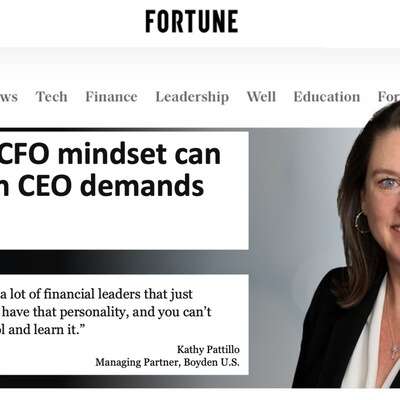Originally appeared in INSIGHTS - The Corporate & Securities Law Advisor (Volume 36, Number 9, September 2022)

A recent McKinsey and Company study of 1000 global firms across 12 countries found that companies with the least diverse boards (in terms of ethnicity and gender) were 29 percent less likely to achieve above-average profitability than other companies, while companies with the most ethnically and gender diverse boards were 43 percent more likely to experience higher profits.1 However, despite more than 50 years of equal opportunity policies, women and ethnic minorities still represent a small percentage of board directors at corporations worldwide. Although the number of women and ethnic minority (that is, Asian, Black/African American, and Hispanic/Latinx) corporate board directors has increased over the past 10 years, most of those gains involved White women and men of color.2
Although White women now represent 20.85 percent of Fortune 500 board seats, ethnic minority women directorship remains low at only 5.66 percent of the Fortune 500 board seats (despite making up 18 percent of the US population).3
The Research
To further investigate how diverse executives secure board seats and what barriers they encounter along the way, I interviewed 12 Black women corporate directors to uncover the human and social capital resources corporate boards seek in directors, the human capital that Black women directors bring to corporate boards, and the barriers and enablers that Black women directors encounter on their corporate board journey.
The 12 directors interviewed actively were serving on 38 corporate boards, including 31 public boards (10 of which were Fortune 500 companies) and 7 private boards. Beyond the 38 active corporate boards, these participants collectively completed their board service on an additional 18 corporate boards.
The 12 participants had 2–23 years of corporate boards service (median = 7 years). Of these participants, 42 percent had served on corporate boards for over 15 years, while the remaining had served for fewer than 10 years. Before serving on corporate boards, all the participants served on numerous nonprofit boards for a median of 29 years. They currently were serving on 19 nonprofit boards in addition to their corporate board service.
Human Capital Needed
Historically, corporate boards had consisted of current and former CEOs and CFOs, and they often reached out to their closed group networks of other CEOs and CFOs to recruit new board members— this means that diverse candidates typically were not on the list of prospective candidates.
In the words of one participant, the CFO experience “opens the door to the boardroom, whether you are White, Black, male, female, or not. If you are a public company, large company CFO, your phone just starts to ring.” Nonetheless, over the past few years, boards have started to broaden their search to include those who have no prior board service and who hold roles such as division president, COO, CIO, and other titles that were not even considered in the past. Other participants emphasized that boards are seeking profit and loss operating experience; consulting experience; and deep functional skill sets such as cybersecurity, technology, human resources, legal, marketing, and sales.
These expanded criteria are a result of shifting concerns and needs within organizations. For example, during the enactment of Sarbanes-Oxley in the early 2000s, Qualified Financial Experts that would appropriately govern and provide oversight were in high demand, prompting Fortune 500 companies to actively recruit CFOs from large public companies to serve on their boards.
Social Capital Needed
Independent directors reportedly find their board seats through networking, recruiters, and a hybrid approach of leveraging both networking and recruiters. In the words of April, an attorney and current board member, “It’s who you know, who knows you, and what that person has to say about you that makes a difference.”
The women I interviewed explained that an aspiring director’s network should include existing board members, CEOs, recruiters, and contacts met through external membership groups, board education, and networking events. The women also stressed that these people need to know that an aspiring director is interested in serving on a board and that they can elevate conversations, as they would need to do in the boardroom. Michele explained how to leverage networking opportunities to demonstrate your strategic thinking:
If you find yourself at a dinner and you’re sitting next to somebody who’s on boards, know how to talk to that person. Know how to elevate your conversation in a way where you don’t have to say it overtly, but that person will be thinking: Wow, this person gets it. They’re a real strategic thinker about their own business or some other business.
The reason these relationships are so important is because board director candidates typically are vetted by recruiters and other board members well before the candidate is contacted. Moreover, the candidate is contacted only if the vetting (based on the candidate’s current and past relationships) is successful.
In Ebony’s experience, she was offered a board seat with a company that did not do any of her reference checks but that had previously called everyone they knew who might know her. This vetting process reveals the importance of repairing and nurturing past and current relationships.
Barriers and Enablers A chief challenge facing diverse candidates is the focus on expediency in among recruiters. As a result, search firms tend to focus on former or active Fortune 500 CEOs and CFOs (where little diversity exists). Moreover, Black women executives with CEO and CFO experience usually are at capacity for corporate board service seats, only intensifying the belief that there is a lack of a pipeline of Black women executives. The women I interviewed shared that when contacted by recruiters, they provide the names of other qualified Black women executives and directors who could serve on the board. A second challenge to diverse candidates tends to be their career path. Nicole, who has 19 years of corporate board experience, explained, “If you’re not a CEO, you’ve got to have strong experience in an area that boards are seeking. Be intentional about building those.” Michele added:
If you are the head of HR, you’re never going to be the financial expert [on the board], and you’re not going to be on the radar when people are looking for a financial expert. No matter what you do, even if you take an accounting class, you’re just not going to be that person.
To overcome these barriers, the women I interviewed stressed the importance of mentors and sponsors (both Black, Indigenous, and people of color (BIPOC) and allies, both men and women) who helped them make work-related decisions, negotiate new organizations and industries, navigate strategic career moves, and balance work and life.
Sponsors and mentors included both those assigned during formal corporate programs as well as informal contacts the women made—including internal and external colleagues, peers, subordinates, managers, and board members, among others. Career sponsors opened doors to help position the women for and then to propel them into executive and C-suite roles as well as board seats. Scarlet shared, “Some of my mentors and sponsors are on a lot of boards and they’re on big boards. They’ve been really helpful to me in evolving my message.”
Other mentors created opportunities for the women to gain board experience. Elaine, a corporate executive in various roles at a Fortune 500 company, spent 13 years attending her company’s board meetings up to six times per year. Reflecting on this experience, she shared, “I think really I gained a better understanding of corporate governance and structure and the experience, in terms of how the board looked at my company’s risk management and understanding of the business.” All the women agreed that board experience—whether gained internally or gained through service on a nonprofit board—was invaluable preparation for corporate board service.
The women in this study also emphasized the importance of starting to plan for board service as early as possible, given that it takes substantial time to build the skills, experiences, and contacts needed to secure and be successful in the board role. Victoria, who has 22 years of corporate board service, explained:
If board service is something that you are interested in and you’re 35 years old, you may have a 10-year window to really package yourself, so you’re attractive to a board, and you have all the attributes they are seeking.
Finally, stakeholder pressures (for example, from the investment community) for increased board diversity may have created an opportunistic environment where Black women executives more easily acquire corporate board seats. Within just the past 21 months, the women I interviewed began serving on 27 or 71 percent of their 38 total active corporate boards.
Implications and Recommendations
Corporate board diversity has been a topic of discussion for many years, and it is a complex problem that requires complex solutions. Corporate boards have been responding to board diversity pressures coming from policymakers, institutional investors, and society as a whole. Rather than resort to traditional practices of recruiting CEO and CFO candidates, firms (and the search firms they employ) must recognize they have a problem finding a qualified pool of Black women executives and directors and begin targeting candidates based on the skill sets that meet the board’s needs. This, plus accessing new social networks, should help in recruiting diverse candidates.
Diverse candidates also must do their part in solving the problem of limited board diversity. First, they must inventory their own human capital and commit to transforming into someone attractive to corporate boards by acquiring profit and loss experience, improving their internal and external networks, building more trusted relationships, repairing broken professional relationships, creating more mentor relationships around specific skill sets, positioning themselves for different executive roles internally or externally, gaining exposure to their firms’ internal boards, joining external board related groups (for example, Executive Leadership Council, National Association of Corporate Directors), becoming students of the profession of corporate governance, ensuring they are seen and known as being interested in and capable of filling a board seat, and recommending other diverse candidates for open board seats when they themselves are at capacity.
If organizations, search firms, and diverse candidates implement these recommendations, I believe we can collectively achieve the diversity we need on our boards to improve corporate performance.
1. Hunt, V., Prince, S., Dixon-Fyle, S., & Yee, L. (2018), Delivering through diversity, McKinsey, available at https://www. mckinsey.com/~/media/McKinsey/Business Functions/ Organization/Our Insights/Delivering through diversity/ Delivering-through-diversity_full-report.ashx
2. Bosworth, W., & Lee, S. (2017), “Mandated or spontaneous board diversity? Does it matter?,” Journal of Business and Behavioral Sciences, 29(1), 45–56; Castañón Moats, M., DeNicola, P., & Malone, L. (2020), “Insights from PwC’s 2020 Annual Corporate Directors Survey,” PwC’s Governance Insights Center, available at https://www. pwc.com/us/en/services/governance-insights-center/ library/annual-corporate-directors-survey.html; DeHaas, D., Akutagawa, L., & Spriggs, S. (2019), “Missing pieces report: The 2018 board diversity census of women and minorities on Fortune 500 boards alliance for board diversity,” Deloitte, available at https://www2.deloitte. com/content/dam/Deloitte/us/Documents/ centerfor-board-effectiveness/us-cbe-missing-pieces-report2018-board-diversity-census.pdf.
3. DeHaas, D. (2021, September 20), Missing pieces report: The board diversity census of women and minorities on Fortune 500 Boards (6th ed.), Deloitte, available at https://www2. deloitte.com/content/dam/Deloitte/us/Documents/ center-for-board-effectiveness/missing-pieces-fortune500-board-diversity-study-6th-edition-report.pdf



